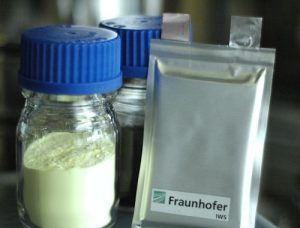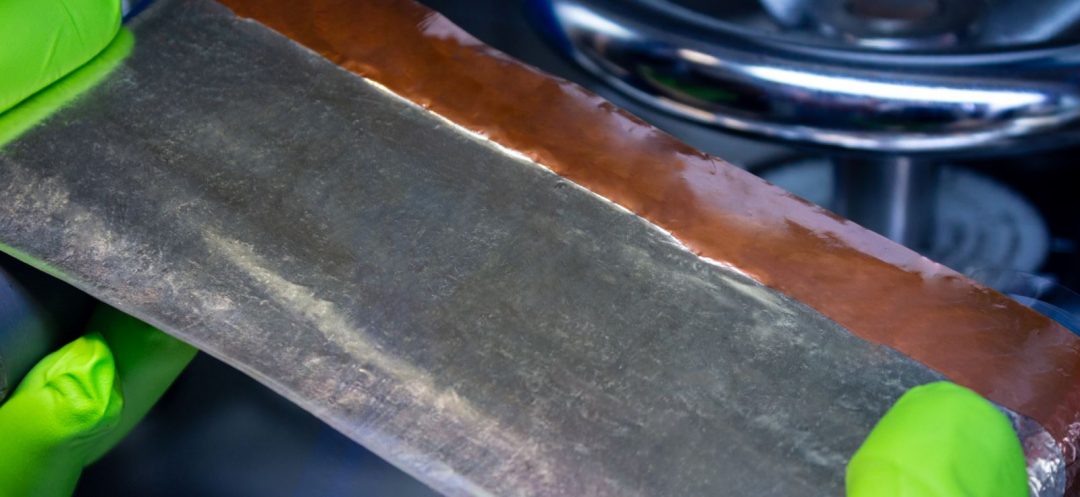Batteries are undoubtedly an essential factor both for the envisaged energy transition and for the mobility of the future. Thus, scientists at the the Fraunhofer Institute for Material and Beam Technology IWS have developed an innovative process for the cost-efficient production of thin lithium anodes made of molten lithium. In a joint project, the Dresden Institute is working with the companies hpulcas and SGS, as well as with scientists at Justus Liebig University in Giessen, to solve important challenges relating to this concept.
The most important innovation lies in developing suitable anodes: µm-thick nickel foils coated with a lithium film, stabilized by means of protective layers.
Lithium-metal anodes are regarded as key elements for battery systems of the future. They enable maximum energy density in terms of both cell volume and mass. The lithium-metal anode is already being used in lithium-sulphur cells to achieve record specific energy values of more than 400 Wh/kg. By comparison, the best lithium-ion battery cells currently only achieve 250 Wh/kg. In addition, solid-state batteries could exceed the volumetric energy density of today’s lithium-ion batteries by more than 70% using the lithium-metal anode.
Conventional production solutions for lithium foils include rolling processes. However, the production of films with less than 50µm over large areas is very challenging. The quality is also limited, as auxiliary materials or lubricants chemically contaminate the surface. Thus, lithium foils cannot be produced on an industrial scale with the quality requirements necessary for battery applications. Therefore, production technologies for high quality and thin lithium coatings are not yet commercially available. In addition, the interface between lithium and other cell components is highly reactive, which requires interface engineering to enable stable and safe use of the lithium anodes.

Scientists use generic lithium anode technology for lithium-sulfur batteries with high volumetric energy density. Image source: Fraunhofer IWS.
For several years now, the IWS has been working on a coating process that permits producing lithium films that are just a few µm thick. The most important innovation involves a lithiophilic surface that allows cost-effective and homogeneous deposition of molten lithium coatings on metallic substrates. “We are able to process thin nickel and copper foils in such a way that it becomes possible to coat them by liquid lithium,” explains team leader, Dr. Holger Althues.
Since spheres form when liquid lithium is applied to an untreated copper or nickel foil, it is not possible to wet the foil surface with lithium. “However, this is absolutely necessary in order to create a coating, and we are able to achieve this with a lithiophilic substrate surface,” Dr. Althues adds.
Furthermore, the innovative technology can already be implemented at a relatively low cost and scaled up to industrial standards in the roll-to-roll process. Modifications of the lithium surface are intended to enhance this coating process.
The team aims to significantly improve the handling, stability, and safety of lithium anodes for use in battery cells. Nevertheless, Dr. Althues concludes, that “we can [already] meet many requirements by fabricating tailor-made anodes.”

















